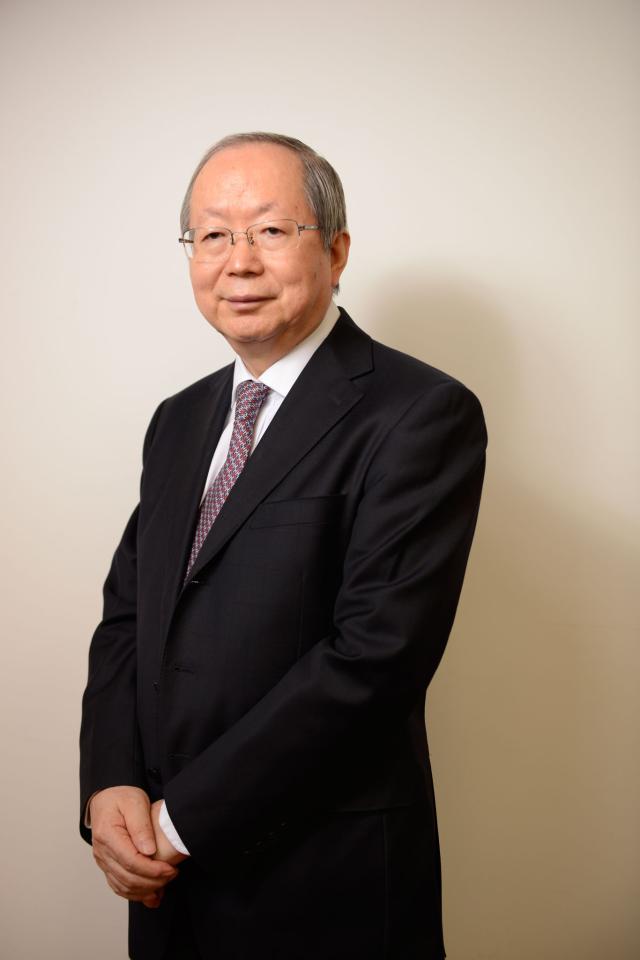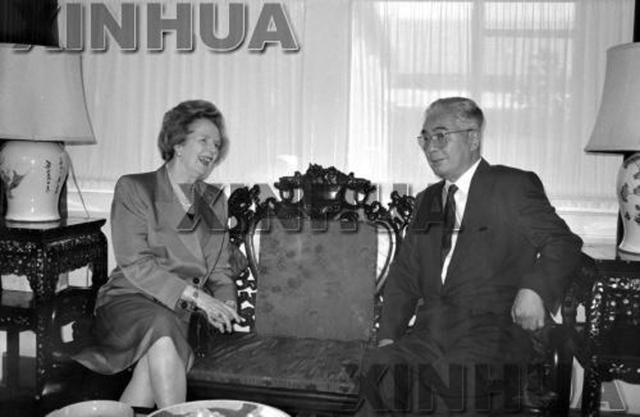During the 40th anniversary of China’s reform and opening-up, Peng Sen, director of the China Society of Economic Reform and former vice chairman of the National Development and Reform Commission (NDRC), China’s top planning body, was busy attending meetings and writing his memoirs to chronicle the historic changes. Since he was transferred in 1985 to the State Commission for Restructuring the Economic System (SCRES, 1980-1997), Peng has been at the core of China’s reforms, particularly macro-economic reform and the overall planning of China’s economic system. Peng has witnessed the gradual but drastic changes of China’s economy and the series of significant decisions in that process.
Peng sees the drastic changes in China over the past 40 years as a consistent break from the shackles of the old system and ways of thinking. He said on many occasions that there is no end to development and reform. Instead, he likened it to a relay race as it is passed down from
generation to generation.
In the past 40 years, China has chosen an incremental path of reform that combines problem-oriented and target-oriented approaches. However, most of the changes were problem-driven and forced according to the situation, according to Peng.
In an exclusive interview with NewsChina, Peng explores why China’s next steps must be to adopt a target-oriented approach and take the initiative in pushing forward key reforms, such as in the property rights system and market-oriented resource allocation.
NewsChina: You pointed out that there are two ways to push forward reforms in China: problem-oriented and target-oriented. How were they demonstrated over the past 40 years?
Peng Sen: When I first mentioned the two approaches in a meeting, most people agreed on the problem-oriented approach, which was mentioned later many times by leadership and in documents. It means no specific pattern is taken in the process, and reform is carried out wherever needed to pave the way for development. In the early years of reform and opening-up, reforms in rural areas, State-owned enterprises (SOEs) and price reforms all followed this logic.
The target-oriented approach has been increasingly accepted in recent years. Starting from the mid-1980s, China began paying attention to overall planning in making decisions about reforms. It was not until the 1990s that China really began making target-oriented reform plans and set the main reforms of a number of key fields based on socialist market economy goals. Yet, tax and exchange rate system reforms were still forced by the situation, as were the supply-side structural reforms in recent years.
I believe that target-oriented reform is more important, because we need to have a clear idea about how many steps we must take and how many obstacles must be overcome to reach the goal. The performance of an organization is limited by its greatest weaknesses. If reforms in some key areas lag too far behind, it affects progress overall. Target-oriented reform will solve this problem. In my report to the central leadership, I pointed out that China’s biggest vulnerability lies in its system, which is of utmost importance to stay internationally competitive.
During previous reforms, China mainly adopted a problem-oriented approach. Now, in order to establish a mature and complete market economy, China needs to consider adopting a target-oriented approach and make breakthroughs in some key fields, such as property ownership and market-oriented allocation of production.
NC: What was the biggest point of controversy when China began its reforms?
PS: At that time, discussion had been fierce over where the reforms would lead the country – to socialism or capitalism. Specifically, it was about whether reforms would liberate productive forces and help improve the socialist system, or whether it would eventually lead the country toward privatization and capitalism. In the 1980s, Chinese leader Deng Xiaoping evaluated the development of socialism based on productivity. Deng’s slogans during that period, such as “poverty is not socialism” and “development is of overriding importance” set the tone for the reforms. His policy of “no disputes [over socialism and capitalism]” warned people against indulging in empty talk and consequently missing the best window for reform and development.
In the 1980s, there were different opinions as to whether the reform of SOEs or price reforms should be first. As Li Yining, Chinese economist and professor at Peking University bluntly put it, the success of China’s economic reforms relied on the success of ownership reforms.
At first, SOE reforms resembled agricultural reforms. It gave more power to enterprises and allowed them to keep more profits through a contract responsibility system [in which a manager is held responsible for the operation, including profits and losses, of an SOE]. At that time, the management of SOEs was very strict. A company would follow orders from above without the slightest deviation, for example.
In the 1990s, operation system reforms were put on the agenda. Establishing a modern enterprise system implied forming a shareholding system, which was a sensitive issue at that time. There were vigorous debates over whether adopting a shareholding system was a form of privatization that would affect the true nature of socialism.
The debates did not stop even after November 1992, when the third plenary session of the 14th Central Committee of the Communist Party of China (CPC) officially proposed building a modern enterprise system. As a matter of fact, in 2013 when the third plenary session of the 18th CPC Central Committee highlighted the mixed-ownership economy as an important form of China’s basic economic system, people were still worried that mixed-ownership reforms would lead to privatization and the draining of State-owned property.
The main debate during the SOE reform was ideological. So in summarizing China’s fundamental reform experiences, the first thing is freeing minds and making thought liberation the guiding idea in the reform.
NC: What other experiences has China gained over the 40 years of reform and opening-up?
PS: The first is persevering in emancipating the mind and seeking truth from facts, as I mentioned above. Emancipating the mind is the guiding thought behind every major step of China’s reform in the past 40 years. The third plenary session of the 11th CPC Central Committee held in 1978 is regarded as the beginning of reform and opening-up because it was during that very conference that the ideological line of emancipating the mind and seeking truth from facts was first raised.
Also, China persisted in making productivity the main criteria and attached overriding importance to development. The nature of reform is to make changes in superstructure and production so as to liberate and develop productive forces. When looking back on the achievements of reform in the past 40 years, only productivity could ensure China was on the right path.
Reform in China is incremental, which reflects Chinese philosophy and wisdom and is the most acclaimed Chinese experience in reform. The key lies in that it stresses sparking enthusiasm among local governments, enterprises and the public, respects and protects reform initiatives and encourages and protects theoretical workers’ conclusions from reform theory and practice.
Last but not least, China’s reform has been market-oriented. The relationship between the planned and market economy, or between the role of government and market, has been at the core of China’s reforms. Before the 12th CPC National Congress held in 1982, debate was heated over the commodity economy. The transition from a highly centralized planned economy to a planned commodity economy and to a socialist market economy reflects the process of liberating the mind and that the Chinese people made the right choice in practice.
There is also other experience, such as how to cope with the relationship between development, reform and stability, the relationship between reform and opening-up and the relationship between reform and the rule of law.
NC: What’s the significance of China’s reform and opening-up in the past 40 years from a historical perspective?
PS: Thanks to my job, first at SCRES and NDRC and then the NPC Financial and Economic Affairs Committee, I have witnessed some major decision-making processes. I participated in drafting many government work reports. From what I saw, reform in China is a process of constantly liberating the mind, practice, summarizing theory from practice and then using the theory to further guide practice. There are repetitions and adjustments, which are normal in hindsight.
Development knows no limits. Neither does reform. Starting from the late 1970s, the original goal of the reforms was to build a new system within eight to 10 years. In 1987, another eight years was deemed necessary by the central leadership to realize that goal. Li Tieying, then director of SCRES, set a goal of completing the reforms in five to eight years. We now see that during the initial stage of reforms, China did not fully realize the complexity and challenge of the job or how long it would take. All in all, it took China 14 years, from 1978 to 1992, simply to set the goal of establishing a socialist market economy.
Reform means making changes to the relations of production and superstructure to pave the way for the development of productive forces. Development is a long-term and ongoing task, as is reform. After the efforts in the past 40 years, we have only achieved certain stages of our goal. The new problems and conflicts on the horizon still need to be addressed through reforms.
NC: What should China pay attention to during the next step of deepened reform?
PS: In the next step, it will be important to properly handle therelationship between top-level design and pilots [in which some regions are selected to pilot the feasibility of a reform measure]. The current problem is that some local governments are too prudent and dare not take the initiative to experiment, which means they will miss opportunities to reform and increase opportunity costs.
In order to build a mature and complete socialist economic system, I personally believe it’s more important to properly deal with the relationship between government and market and the relationship between the central government and local governments.
The report to the 19th CPC National Congress pointed out that the key task of economic system reforms is to improve the system of property ownership and the market-oriented allocation of production factors. That strikes a chord.
Reforms must be carried out on a fundamental level to realize the basic role of the market in resource allocation. For example, efforts need to be made in improving the property ownership system, which includes reforms to the SOE management system and State capital
allocation, as well as the three major aspects concerning rural land: [the land acquisition system, the marketization of collective constructive land and the rural homestead system].
There are three major tasks to complete in improving the market system. The first is to improve the property rights protection system. In 2016, the State Council released guidelines to enhance the protection of property rights [in an effort to shore up social confidence and promote social justice]. In 2018, some wrongly charged property rights cases were reexamined and corrected. These efforts were significant in further perfecting the basic socialist economic system and driving the development of the non-public economy.
Secondly, a unified negative list system for market access should be established, not only for foreign capital but also for the domestic private economy and social capital, to optimize resource allocation in the market. A negative list system could largely decrease the government’s intervention in micro-economic activities and allow for various market players to equally enter all sectors except a prescribed few on the list according to the law. [In December 2018, China put forward its first nationwide negative list to fully carry out the approach following a pilot program in 2016.]
Last, a fair competition review system needs to be built. It is a very important fundamental system for market economies. It aims to prevent and limit the damages that improper industry policies, subsidy policies and local protectionism might bring to market competition, so as hasten the building of a unified and open modern market system for orderly competition.

 Old Version
Old Version

